REC Tracking Systems: A Cost-Effective Means of Clean Power Plan Compliance
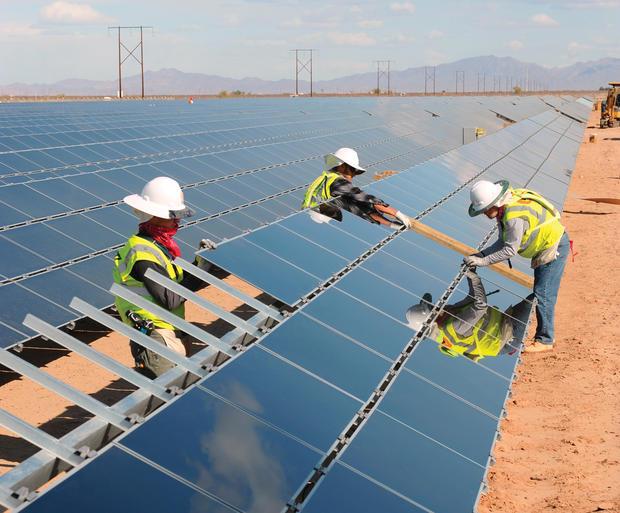

The Obama administration Environmental Protection Agency's (EPA) Clean Power Plan gives states broad leeway in meeting a national target of reducing greenhouse gas emissions (GHGs) from existing coal-fired power plants 30 percent from 2005 levels by 2030. One pathway is to bring more renewable energy generation capacity online.
Businesses instinctively deride stricter environmental regulations, claiming that the additional costs of regulatory compliance will constrain economic growth, raise prices for consumers and reduce their competitiveness. As numerous studies have shown, that's the case only if businesses limit the scope of the analysis by excluding the costs to human health and ecosystems as encapsulated in broader economic sustainability metrics such as natural capital accounting, as well as by ignoring economic and job growth in other sectors that can capitalize on the new regulations.
Moreover, as highlighted in a report from the Center for Resource Solutions (CRS) and the Regulatory Assistance Project (RAP), a tracking and reporting mechanism that's already in wide use can provide a cost-effective means for U.S. states to help assure compliance with the Clean Power Plan: the information systems used to track and report on renewable and solar renewable energy certificates (RECs and SRECs).
Clean Power Plan blowback
As expected, it didn't take long for the coal industry and coal-friendly U.S. states to challenge the EPA's Clean Power Plan in U.S. courts. Twelve states sued the EPA this past week, arguing that the proposed new regulations are illegal because existing power plant emissions are already regulated under another section of the Clean Air Act.
The latest legal challenge to the Clean Power Plan – filed in the U.S. Court of Appeals for the District of Columbia by state attorney generals in Alabama, Indiana, Kansas, Kentucky, Louisiana, Nebraska, Ohio, Oklahoma, South Dakota, South Carolina, West Virginia and Wyoming – comes on the heels of a lawsuit filed six weeks ago by Murray Energy Corp., the nation's largest privately held coal mining company.
Nine states joined Murray Corp.'s lawsuit. Claiming that the Clean Power Plan would cause “real harm” to their economies, seven of the nine also are party to the lawsuit filed with the U.S. District Court of Appeals in D.C.
Such claims as a rule ignore the economic and job stimulus compliance with the Clean Power Plan would create. They also ignore the long-term social, environmental and economic benefits cleaner air, less land and water pollution, and lower GHG emissions would have on the U.S. economy and society for this and future generations.
Sensible, cost-effective Clean Power Plan compliance
Finding cost-effective ways of Clean Power Plan compliance by making use of existing technology and information systems makes good sense all around. As CRE and RAP note in Tracking Renewable Energy for the U.S. EPA's Clean Power Plan: “Renewable energy is one of the four main building blocks outlined in the EPA's Clean Power Plan, and states are likely to rely upon the production of renewable energy as part of their efforts. To control carbon in the electric sector."
"The REC tracking systems already in use in states across the country “hold promise as an enabler of 111(d) compliance with renewable resources such as solar and wind generation...When used according to basic protocols, these systems can support the ability of every state to comply with federal carbon standards,” the report authors continue.
Action on the part of state regulators, who “have broad authority to develop the policies and requirements that are needed to tap the full potential of existing REC tracking systems” is the key to making this happen.
In their paper, CRE and RAP explore and elaborate how renewable energy is accounted for and tracked via these REC tracking systems and how they may make use of these to assure Clean Power Plan compliance.
The full report is available free to the public.
*Image credits: 1) First Energy Mansfield Ohio coal power plant via Shutterstock; 2) First Solar/NRG
Why Buying Local and Organic Won't Always Affect Our Environmental Footprint


By Natalie Hase
Whether we like it or not, most of us are strongly bound to the agricultural sector, and we feel the responsibility to make the right choice from an environmental perspective. Nevertheless, it can be confusing standing in the supermarket in front of a sea of products, and consumers immediately go for the “greener choice," that being local or organic.
We’ve gotten better at knowing where our food comes from – but can we claim the same for the environmental impact of our food choices?
According to Elin Röös, researcher at the Swedish University of Agriculture and co-author of the report “Organic production and climate change,” greenhouse gas emissions contributing to climate change mainly derive during the agricultural production phase, rather than by transportation of the products.
Natural processes are the main drivers to the sources of these emissions. Therefore, choosing organic and local over conventional products will have little effect on decreasing the main greenhouse gas emissions coming from the food that we eat.
According to the Food and Agriculture Organization (FAO), there are three prime factors contributing to global warming in agricultural production: methane from cattle or more precisely enteric fermentation; the aggressive greenhouse gas known as nitrous oxide derived from the ground; and carbon dioxide from the cultivation of organic soils.
In Sweden, these emissions account for 75 percent of the total greenhouse gas emissions from the agricultural sector. The latter is also responsible for one-third of global human-caused greenhouse gas emissions, according to the Consultative Group on International Agricultural Research.
But there are, in fact, other reasons to justify the choice to purchase local or organic products.
“Most often, the choice of buying local products will at first hand be of economic importance to the region, as you will support the local economy, rather than decrease emissions,” says Elin Röös. The main issue with local products is that there is no actual regulated definition of what is “local." There are no rules of where the product must come from, or how far it must be transported.
As important as it is to differentiate between organic and local products, the two concepts may often overlap.
Agneta Krogstorp is the owner of the Krogstorp Farm, a Swedish local producer of rapeseed oil. Although not a certified organic farmer, Agneta Krogstorp believes that there is often a trend among local producers to care about the surrounding environment and to prefer highly valued and sincere production methods.
“Every farmer should aim at practicing organic methods in their production, whenever possible,” says Krogstorp.
Choosing organic products is a symbol that national, and international, rules and standards were met during the production phase.
The FAO defines organic agriculture as a system, which “considers environmental and social impacts by eliminating the use of synthetic inputs,” and addresses issues such as the harmful use of pesticides and over-fertilization.
Looking beyond local and organic products, the environmental impact of food includes not only the types of products that we consume but also the vast quantities that we ingest. Changing our habits and the way we eat could therefore be a much more sustainable solution.
“The production of meat and dairy products contributes to a lot more greenhouse gas emissions than crop production does,” says Elin Röös.
“The most important decision we can make to lessen our environmental impact through food, is to diminish our consumption of dairy products and meat,” she adds.
Image credit: Sarah Gilbert, Flickr
Natalie Hase is a BSc Student at Royal Institute of Technology.
This story is part of Student Reporter's coverage on "Organic Solutions in Global Food Affairs". You can read more from the series on studentreporter.org.
Supply chain sea change at Hyatt Hotels Corp


Mega US hotel chain, Hyatt Hotels Corporation, has launched a global initiative to increase procurement of responsibly sourced seafood at its hotels, starting with an initial goal of responsibly sourcing more than 50% of its inventory by 2018.
As a part of this effort, Hyatt will also work toward purchasing more than 15% of its seafood supply from fisheries or farms that have been certified by the Marine Stewardship Council (MSC) or the Aquaculture Stewardship Council (ASC).
This is the first phase of a long-term seafood sustainability strategy in partnership with World Wildlife Fund (WWF). The partnership also focuses on enhancing the sustainability of seafood sourcing at Hyatt hotels by eliminating the procurement of highly vulnerable seafood species.
“We are deeply focused on improving the health of our planet and our communities by implementing sustainable practices, and we hope that this effort to responsibly source more than 50 percent of seafood purchased by our hotels by 2018 will set a new standard for the hospitality industry,” said Mark Hoplamazian, President and CEO of Hyatt Hotels Corporation.
“Not only is fishing an important livelihood in many of the communities where Hyatt hotels operate, but many people around the world rely on fish as a primary source of protein, making it essential to help protect the world’s oceans. As we continue to live out our mission of making a difference in the lives of the people we touch every day, and demonstrate care in everything we do, these overarching goals and call-to-action show our dedication to acting responsibly and doing what is best for our colleagues, guests, and owners.”
Picture credit: © Tom Peter| Dreamstime Stock Photos
Preparing the Next Generation for Ethical and Safe Online Engagement
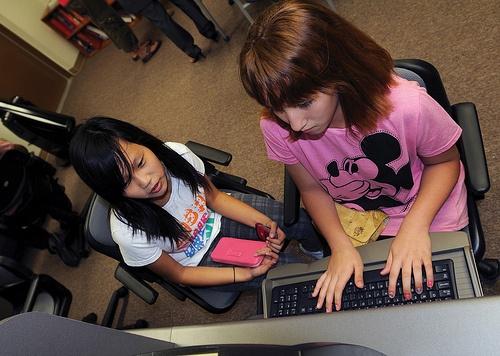

The Internet has arguably taken over our lives. In as little as 25 years, the magnitude of its impact and influence on the way our society interacts with technology, money, people and businesses is astonishing to say the least.
A Pew Research study released earlier this year reveals that more than 87 percent of American adults use some form of the Internet, whether through email, their mobile device or directly from their computers. Children aren’t trailing too far behind these statistics, and it won’t be long before they’re outwitting us in the digital space.
If we thought that we were a generation of highly-adept, technologically-savvy Internet-dominating adults, think again.
Increasingly, children are becoming the top purveyors of new media. Common Sense Media's fall 2013 report, Zero to Eight: Children’s Media Use in America, found that more than half (52 percent) of children ages 0 to 8 now have access to newer mobile devices, such as smartphones and tablets, and 53 percent of 2- to 4-year-olds have used a computer.
Forty-seven percent of American teenagers are reported to own a smartphone that often serves as a primary Internet access point across socioeconomic status.
With the omnipresence of the Internet, parents must be increasingly aware and armed with the tools to keep their children safe online.
I spoke with Rebecca Randall, vice president of education programs at Common Sense Media — a partner of Symantec security systems — to get her thoughts and tips on how parents can prepare and protect their digitally-connected kids.
Common Sense Media is armed with the mission of providing parents, educators, health organizations and policymakers with reliable, independent data on children’s use of media and technology and the impact it has on their physical, emotional, social and intellectual development.
Randall advises that parents approach the Internet participation conversation with their children by first understanding their responsibility to provide explicit guidelines and open-space dialogue to help kids differentiate what is and isn’t acceptable for them to access or participate in online.
“We need to be able to guide kids around positive online engagement instead of pointing the finger at bad behavior,” Randall explained. “Providing parameters helps them build a positive reputation.”
Reinforcing positive digital citizenship and literacy can help kids think responsibly and critically -- and help them to recognize predatory behavior and know the boundaries of what’s appropriate and what isn’t. For instance, reminding kids to never share their private information such as addresses and phone numbers might seem like a no-brainer but can open the conversation about what else might be considered unacceptable online as kids and teens build their online reputation.
When it comes to privacy protections online -- allowing apps to post on social networks on your behalf or allowing apps to map your location -- Randall raises that terms and conditions for adults and teens alike is cumbersome.
“We need to help young people understand the various ways companies are extracting data. Company data tracking and collection isn’t something teens are inherently aware of,” says Randall, who also mentioned that Common Sense Media is working with Congress on legislative policies to require that companies write terms and conditions in language that people can actually understand.
Best practices for parents include having their teens configure their settings to opt out of location sharing and limit app posting capabilities.
Parents should also think about how their child’s school will play a role in engaging students and families in these topics. “Particularly as schools integrate more technologies in the classroom they need to have skills necessary to engage ethically,” Randall says.
Image Source/Flickr
Coal Companies Accused of Shortchanging Taxpayers on Export Royalties
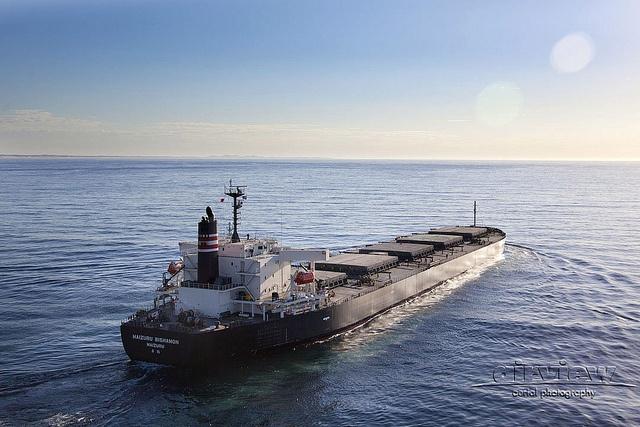

It may come as a surprise to learn that much of the coal that is mined in this country is mined under lease arrangement on federal land. The Bureau of Land Management (BLM) maintains coal leases, primarily in the West, on 570 million acres of land. If that sounds like a lot, it is. That constitutes an area larger than Alaska, California and Georgia combined, or about a quarter of the entire country
That includes, among other things, most of the Powder River Basin in Wyoming and Montana, which currently supplies 40 percent of all the coal produced in this country. Because this land belongs to the American people, its commercial uses should be generating revenue to help offset taxes, in the form of rents and royalties.
It does indeed do so, though some have questioned whether the amounts collected represent the true market value of the coal, or if, in fact, artificially low prices are not only depriving the American people of fair revenues, but also encouraging more coal mining and coal burning than might otherwise occur if the coal were priced fairly.
A report produced by Sightline Institute, entitled Unfair Market Value, alleges that the BLM does not include the substantial markup that coal companies receive when they sell coal overseas, in assessing the value upon which royalties are based. This, they claim, leads to millions of dollars of lost taxpayer revenue each year.
Even as the U.S. is moving away from coal, both in response to the increased availability of domestic natural gas, as well as the call to reduce carbon emissions, exports of coal, particularly Western, coal have soared from 7.6 million tons per year during 2006-2009, to 19 million tons per year in 2010-2012.
While much of that coal was sold in Asia for as much as $60 per ton, coal companies paid less than a dollar per ton for most of it, with some being sold for as little as 18 cents per ton, despite the fact the federal law says that the companies must pay fair market value. While the regulations require that the coal be sold at auction, the vast majority of the auctions attracted a single bidder.
Anyone who has ever bid on eBay knows that if you are the only bidder and the minimums are near-zero, you can get a very good deal. That is really the key, the minimum price -- which in this case is referred to as the fair market value (FMV) -- is set at the discretion of the BLM.
The report is filled with tales of sweetheart deals where coal companies are making tremendous profits on Asian sales and then coming back to the well for more. Total Western coal exports from 2006-2012 exceeded 86 million tons.
“Given the coal industry’s clearly stated intention to expand coal exports,” state the authors, “federal officials now have both a duty and an opportunity to conduct a comprehensive review of the economics of coal exports when assessing the 'fair market value' of federal coal sold to private firms.”
This is not a particularly new trend. Since 1990, the BLM has approved 2.4 billion tons in coal sales at industry-friendly prices ranging from less than a penny to 25 cents per ton. The highest price on record for BLM coal was $1.35 per ton.
The Sightline report was not the first to question these practices. Sen. Ron Wyden (D-Ore.) sought an investigation when he first became chairman of the Senate Energy and Natural Resources Committee last year. The investigation is still underway, but a preliminary report released back in February stated that the Interior Department, to which the BLM reports, “appears to have repeatedly shortchanged taxpayers by underestimating the volume of coal contained in reserves that is sold to lessors.”
A 2012 report by Reuters also suggested that some questionable accounting by major coal firms could have cost the U.S. government as much as $100 million.
No one has suggested why the BLM has been so lenient, though cozy relations between government regulators and those they are charged to regulate is certainly nothing new, sometimes at considerable expense to the American people.
Image credit: Mark Merton: Flickr Creative Commons
Right Action: Blocking a Dam in Cambodia's Sacred Forest


In another example of the collateral damage caused by the relentless march of economic development, a sacred Cambodian forest and its residents are fighting for their very survival against the Cambodian government and the largest hydropower company in China.
The fight is over a hydroelectric dam being planned for the Cheay Areng region at the base of Cambodia's Cardamom Mountains, just one piece of a larger government plan to build a network of 17 dams across the country. Four have been built already, all in supposedly unoccupied forests. This project, however, is different, as the valley is home to more than 1,600 mainly indigenous people. If the dam were completed, almost 2,000 hectares of land belonging to the indigenous Khmer Daeum would flood, a territory which includes 500 hectares of sacred land in the Central Cardamom Protected Forest.
The Areng dam project has been fraught from the beginning. The first company on the project, China Southern Power Grid, pulled out due to environmental concerns; next up was China Guodian Corp., which abandoned the project citing questions about its economic viability. Sinohydro, China's largest hydropower company and the world’s biggest dam producer, took over from there but has thus far been stymied by protests from the local Chong people and some Buddhists from Cambodia's capital.
Protests
In November 2013, a group of Buddhist monks -- part of the Independent Monk Network for Social Justice (IMNSJ), a movement started in the wake of Cambodia’s contested 2013 national election -- traveled from the capital, Phnom Penh, to help save the endangered forest from Sinohydro's proposed dam. The group of 40 monks walked, drove and swam the 150 or so miles to the Areng valley, carrying 80 meters of saffron-colored cloth to "bless" the forest's threatened trees.
A few months after their initial journey, the IMNSJ monks returned to the valley and joined a group of roughly 150 villagers who had launched their own protest movement aimed at blocking Sinohydro's access to the valley. In early March, the protesters gathered at the storage place for Sinohydro's machinery and succeeded in preventing it from leaving the land. The protests are being led by the Chong people, who are considered "original Khmers" and have lived in the Areng valley for over 600 years. They make their living by growing basic crops, foraging, and fishing in the valley's streams and river. Thus far, the group has been successful at blocking Sinohydro's access to the valley, and so the dam project remains stalled. However, if the government decides to pursue construction in earnest, it is not clear what impact the protests will have.
What is clear is that the local people, those most affected by construction, do not want the dam and certainly do not want to be forced from their land. Last week, the New York Times "Op-Doc" series featured a six-minute film on this subject. Watching the brief documentary, one can feel the desperation of the Chong people. One woman in the film states: "The government claims to bring progress. However, ... if we are relocated, we will suffer beyond compare." Another rejects the notion of "compensation,” stating, "Even if they piled money 1 meter above my head, I wouldn't want their Chinese money. I want to stay in my village."
Impacts
The impacts of damming the Stung Cheay Areng would be severe. For one, more than 1,500 people would have to be relocated, and thus far none have been told where their future homes would be. At first, the potentially displaced were slated to be moved to a relocation site called Veal Thom. This plan, however, was ultimately rejected after an outcry by conservation groups hoping to protect an elephant migration route that it would have severed by the relocation. No alternative has yet been put forward.
Beyond those living in the valley, thousands more would be negatively impacted by the dam, which would "block the flow of the river and destroy downstream habitats for wild fish that are crucial to the local economy,” according to the NGO, International Rivers, which is campaigning against the building of the dam. The dam would also upset the local ecology. The Areng valley, known to conservationists as a "biodiversity jewel" of Southeast Asia, is home to more than 30 endangered animal species, all of which would be threatened by the dam and the subsequent flooding. Chief among the threatened species is the endangered Siamese Crocodile, already more than 99 percent extinct and to which the Areng River currently offers the most secure breeding site. (The crocodiles are also believed to be guardian spirits.) Other threatened species include clouded leopards, tigers, elephants, pileated gibbons and the Asian arowana fish.
Worse still is the fact that the potential harm caused by damming the Areng would hardly be offset by corresponding benefits to the Cambodian economy. While blackouts are relatively common in Cambodia, hydropower has been called a “dinosaur technology” because it produces insufficient electricity in the dry season. In fact, in a report commissioned by the Cambodian government, the Japanese International Cooperation Agency concluded that the nearly $340 million the dam project could cost would result in a high cost of electricity per unit compared with other dams, and provide only a “modest” 108 megawatt output.
Sadly, there isn't much left of Cambodia's forests, and the Cardamom remains one of the few "holdouts" as Cambodia continues its race to log, mine, deforest and develop. According to the United Nations, since the 1980s, Cambodia has lost 84 percent of its primary forests. The World Bank reports that, by 2010, the percentage of forested land in Cambodia had fallen to 57 percent, down from 73 percent in 1990, the result of illegal logging, slash-and-burn agriculture, land grabs, uncoordinated mining and other unsustainable development tactics.
That the protests have thus far stalled Sinohydro is heartening, but to date the Cambodian government hasn’t really flexed its muscles. As the award-winning filmmaker who created the Times Op-Doc on the subject, Kalyanee Mam, put it:
I fear this David and Goliath battle will end tragically, unless significant pressure is placed on Sinohydro and the Cambodian government to either abandon the project or make good-faith efforts to involve threatened communities and conservation groups in the planning process. While development is essential to the future of Cambodia, the destruction of national treasures like the Areng valley will make that future far bleaker. May the country’s leaders choose their priorities wisely.
I sure couldn’t have summed it up any better.
Image credit: Flickr/mossaiq
VW Covers Sustainability Bases with Ultra Low-Carbon e-Golf
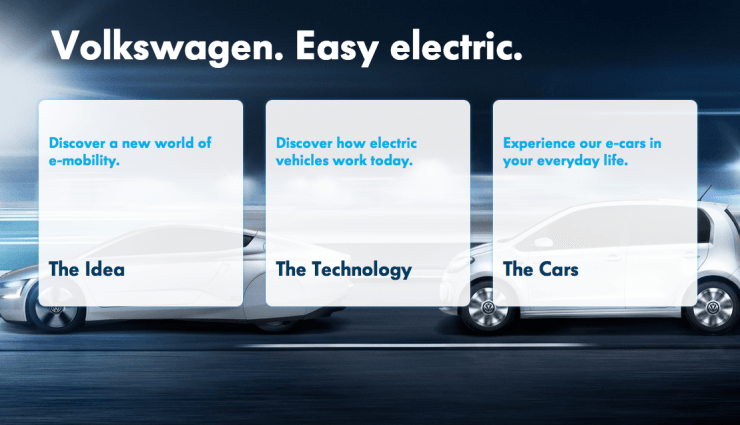

The most complete elaboration yet of Volkswagen's (VW) vision of low-carbon e-mobility comes in the form of the new e-Golf, which is due to arrive at participating Volkswagen of America dealer showrooms in select U.S. states later this year.
In addition to the 2015 e-Golf's zero tailpipe emissions, VW of America struck up a partnership with 3Degrees to purchase carbon offset credits in California and around the U.S. to offset greenhouse gas (GHG) emissions associated with its production and distribution, as well as those from battery charging for up to 36,000 miles of driving.
VW also announced it is partnering with U.S. solar PV manufacturer SunPower to offer e-Golf owners “premier access” to SunPower's upcoming home solar energy storage solution. Rounding out the e-mobility package, VW chose Bosch Automotive Service Solutions as its preferred home EV charging and installation services provider, while ChargePoint was chosen to provide EV charging stations to the VW U.S. dealer network and to provide e-Golf owners in the U.S. access to over 18,000 charging stations across the country.
A holistic approach to low-carbon personal transportation
“Through these innovative collaborations, Volkswagen will be one of the first high-volume manufacturers to deliver a truly holistic approach to ultra-low-carbon mobility,” VW explains a press release. Added Oliver Schmidt, environment and engineering office general manager for Volkswagen of America:
"Volkswagen feels it is important to look beyond the benefits of driving a vehicle without tailpipe emissions and to take a holistic approach to e-mobility. We now have the ability to offer offsets that approximate the emissions created from production, distribution and the initial 36,000 miles of use."
Added 3Degrees President Steve McDougal:
"Volkswagen is showing leadership by including carbon offsets standard with this e-Golf electric vehicle. As more people choose low and no emission cars, Volkswagen is making it possible – and easy – to think comprehensively about the greenhouse gas emissions profile of a vehicle."
An ultra low-carbon e-mobility partnership
VW will be working with renewable energy and carbon offset services provider 3Degrees to help determine the carbon offset projects it will invest in as part of the e-Golf e-mobility program. Volkswagen of America has already chosen forestry conservation and landfill gas capture projects in California and Texas to offset GHG emissions produced from e-Golf manufacturing and distribution, as well as EV charging for the initial 36,000 miles of driving.
VW of America's purchase of carbon offset credits will support the Garcia River Conservation-Based Forest Management Project, a 24,000-acre native redwood forest preserve in Mendocino County, California. The funds will be used to increase carbon sequestration and storage while also helping restore natural wildlife habitat.
The automaker is also purchasing carbon offset credits to support the Big River and Salmon Creek Forest in Mendocino. Past unsustainable logging and forestry practices fragmented the 16,000-acree native Douglas fir and redwood forest, which the Conservation Fund – thanks in part to VW's carbon credit purchase – is now protecting through a land purchase.
VW has also purchased carbon offset credits to support the McKinney Landfill project in Texas. There, methane and other GHGs-- the result of anaerobic decomposition within the landfill -- are being captured, reducing odors as well as providing energy in the form of electricity and heat. Emissions reductions are being verified, validated and registered using the Climate Action Reserve's Landfill Project Protocol.
The partnership with SunPower means e-Golf owners will be able to produce and store clean, renewable electricity for use in the home, as well as charge their EVs. "Investing in a residential SunPower solar system is a reliable, cost-effective way for Volkswagen customers to help manage household electricity costs and charge their electric vehicle with emissions-free energy," SunPower President and CEO Tom Werner said.
"Partnering with Volkswagen is a natural fit for SunPower, given our shared passion for delivering innovative, alternative energy solutions that help customers power their lives sustainably, and for the long term."
Rounding out VW's vision of e-mobility, Bosch Automotive Service Solutions will offer e-Golf owners EV charging and installation services. Bosch will provide e-Golf owners with Power Max, a 240-volt EV charging unit, at “highly competitive prices,” as well as full-service installation for qualified e-Golf drivers.
Finally, VW chose ChargePoint to provide VW-branded EV charging stations at all authorized e-Golf dealerships. E-Golf owners will also have access to ChargePoint's over 18,000 EV charging stations across the U.S.
Images courtesy of Volkswagen, The Carbon Fund and Bosch Automotive Service Solutions
Vacation Equality Project Seeks Mandated Leave for Americans


Vacation may seem as American as apple pie, especially the places on offer that range from the Poconos, to Yosemite, to Yellowstone, to Florida’s beaches. But at the same time, most Americans score only 10 days of vacation time a year. And for about 25 percent of working Americans, they have no vacation days at all. In fact, America is one of the few industrialized countries that does not guarantee vacation days by law. Hotels.com is trying to change that with the Vacation Equality Project.
The statistics, indeed, are daunting. France, of course, stands out with workers entitled to 30 days under law. The number is the same for the United Arab Emirates (plus 60 days of paid sick leave!). Other European nations, including Germany and Italy, require 20 days under their respective employment laws. Even Japan, with its work culture notorious for long hours and commutes, requires that workers have at least 10 days of annual leave.
Hotels.com wants to bring the U.S. up to par. Along with a bevy of facts related to leave, and a direct-and-do-the-point YouTube video, the company makes an emotional case for why it believes paid vacation should be mandated by law. Visitors to the site are encouraged to visit the White House’s online petition and join a chorus of those who believe the 28 million Americans in the private sector who have zero vacation days should have them by law.
The Vacation Equality Project’s goal was to have 100,000 signatures by August 15. So far, however, the effort is flagging: The number hovers just over 13,000. So what’s going on?
One of the challenges could be “signature fatigue” (my inbox flows with about as many requests to sign a petition as pleas to support a new product on Kickstarter). And a large part of it could just be American work culture. While most of us on this side of the pond probably feel as if we work too many hours — and compared to many Europeans, we probably do—the average number of working hours is slightly below the OECD average. Our friends in South Korea, Chile and Greece tally the most annual working hours; even Canadians outpace us. Furthermore, for better or worse, many Americans are tied to their jobs. The reality on this side of the pond is that work is a big part of an individual American’s identity. Others are weighed down by under-water mortgages and in this improving but still challenged economy, just want a job. After all, how many of our peers do not go on vacation at all, or stay at home because they are forced to use their vacation time or otherwise lose it?
The case for mandated vacation is pretty strong. We need time off to decompress, spend time with loved ones, and relax at the beach or a cabin in the woods. But one shortcoming of the Vacation Equality Project is that no strong business case, or a case from human resources and employee engagement perspectives, comes out strong in this well intentioned, but weak, appeal. True, Hotels.com would benefit if such legislation is passed—but this is still a worthwhile cause. However, in an age where we are all urged to support a cause on social media, this outreach just does not stand out is getting lost in our inboxes. Finally, let’s not forget about a business community that is up in arms over even the suggestion of any sick leave legislation. A movement to make mandated vacation time a reality requires not only compassion, but should be backed up by reasons that resonate with workers and business owners.
Image credit: Leon Kaye
Leon Kaye has lived in Abu Dhabi for the past year and is on his way back to California. Follow him on Instagram and Twitter.
Millennials are Changing the Investment Conversation
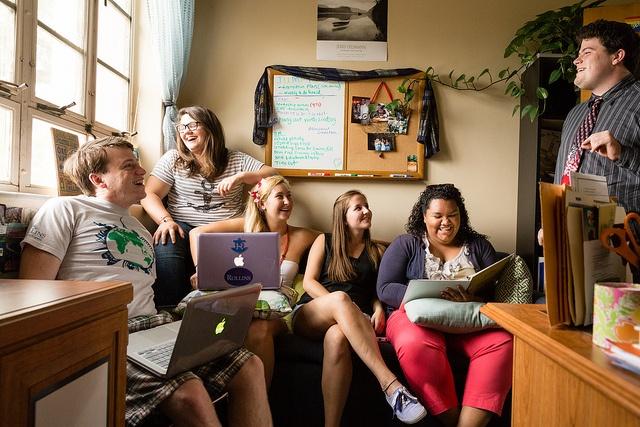

Editor's Note: This article originally appeared in "The Millennials Perspective" issue of Green Money Journal. Click here to view more posts in this series.
By Justin Conway
Amidst all the talk about the trillions of dollars in wealth transfer and flood of stats coming-out about millennials, I thought I’d spend some time talking about what I see millennial investors doing as it relates to investing. I do so from my role at Calvert Foundation, working with investors, their financial advisors, their brokerage firms, and the entrepreneurs and organizations creating local solutions in their communities. I also do so as a millennial myself, if you allow for the term to refer to those born in the earliest quoted starting window of 1978–2000 as many do, and I’ll ride my borderline millennial status to use “we” throughout.
While we have very diverse perspectives, I certainly identify with the studies that say millennials are more inclined to want their jobs, purchases and investments to have a positive impact on the world. Here are some of the exciting things I already see millennials bringing to investing.
Millennials are getting involved in investing earlier
Many of us have recognized earlier on that how we spend and invest our money has an impact. Some see this as small, some recognize it as significant, but we’re more likely to have learned something along the way about finance and economics to at least know it’s important and be curious about it. We often question the sometimes traditionally held notion that investing is separate from other aspects of our lives and best handled by professionals without much involvement from us. Many of us are eager to learn about investing and what it can do for us personally and our communities.
I see this curiosity in millennials testing the waters, so to speak, with their money. We’re growing-up with websites like Kiva, Indiegogo and Kickstarter, allowing us to put small amounts of money toward people and projects we are interested in, and in some cases are our friends’ ventures. That ability to conveniently engage financially is translating to how we invest as well -- from choosing a bank, to looking for investment ideas and ultimately to investing. At Calvert Foundation, we see college students starting to invest $20 to $100 in support of issues they care about, and years later those same people investing more when they have more. It will be interesting to see if and how that trend continues.
Overall, I see more millennials thinking about aligning their money with their lives. At various points they are making time to learn about investing. Managing finances and investments has rapidly become more convenient, making it easier to stay up to speed on them, so much so that investing is becoming a more regular part of our lives. I think this holds true even if we don’t consider ourselves “investors” with the investments we’re making.
Millennials are connecting with friends and family about investing
Investing becomes more convenient in the technological and social sharing revolutions we are now part of. Millennials are more likely to be embracing these technologies, and as such are connected to more people than ever before. We see the networking opportunities leading to fossil fuel divestment campaigns and impact investment clubs at colleges, and more recent graduates looking to break into impact investment as a career path or focus of graduate study. The many connections might not always be the deepest of relationships, but we have significant networks in which to learn from and influence.
Beyond the large networks, one of the most exciting trends I see is millennials talking with their families about investing. This sometimes starts out rocky, but I’ve seen it create deeper connections across generations. More families are now talking about what matters to them individually and as a whole, bringing ideas to the table (literally), and discussing how their financial resources serve not only the financial needs of the family, but also higher callings and legacies they would like to leave.
Much has been said about millennials wanting a higher purpose in their careers, which I see as being similar to the significant number of baby boomers that are now looking to find more purpose in their lives. These opportunities for connecting on financial decisions present opportunities to bring families closer together and get investments more impact-aligned well before wealth transfers happen.
Millennials are looking for more from their financial advisors
Working with investors and financial advisors, I see millennials looking for relationships with their advisors. No, not necessarily to become good friends, but wanting financial partners that listen, take time to explain opportunities and answer questions, bounce ideas, and going on this financial journey together. In some ways, investors have always wanted this from their advisors, but I see millennials taking this up a notch. Just as we often have an aversion to labels (like “millennials”), we often don’t like off-the-shelf investment strategies. Many of us want to work collaboratively with our advisors to create both a trusting relationship and an investment approach tailored to our specific needs and interests.
Relationship building is important for advisors and their businesses too, especially because only a low percentage of inheritors keep their parents’ financial advisors. Additionally, we millennials have not been overly impressed by the stock market in our lifetime. We are looking for someone that can help us navigate stocks, as well as other options like real assets, which many of us are more interested in. One of the challenges advisors face is that whatever investment recommendations are made, we’re probably going to research them on our own and ask other trusted partners and advisors about what they think until we’re really comfortable with it.
What does this mean for impact investing?
The good news is that the impact investment industry is developing in order to meet the current and upcoming demand from millennials and other investors. More strategies and products are being developed, and access to them is becoming more democratized. For financial professionals who’ve long sought options, not only are more coming, but the significant barriers to entry that impact investments face in gaining access to the financial services industry are more known, and therefore more innovative conversations are taking place on how to overcome them.
Read the rest of Justin's article here.
Image courtesy of Green Money Journal
Justin serves on the Board of US SIF, the membership association for financial professionals engaged in sustainable and responsible investing, as well as numerous other advisory boards and committees in the industry. Previously Justin managed the Community Investment Program of the Social Investment Forum and Green America, and worked on human rights in both Asia and Central America. He received a Master’s in Applied Economics from Johns Hopkins University and a Bachelor’s in Sociology and Statistics from James Madison University.
Third Party Quality Assurance for Sustainability Reports on the Rise
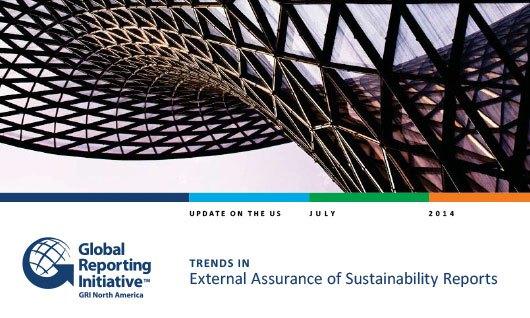

Sustainability reporting should be comprehensive, transparent, non-biased and standardized, and the best way to improve the quality of reporting, according to the Global Reporting Initiative (GRI), is to get those sustainability reports externally assured, i.e. reviewed by a third party.
GRI pioneered the use of a comprehensive “Sustainability Reporting Framework,” comprising reporting guidelines and sector disclosures, to help enable organizations to identify and better manage risks and opportunities.
In a new report, Trends in External Assurance of Sustainability Report, GRI reports that over the past 12 years it has witnessed “a tremendous and rapid uptake of sustainability reporting, and an increasingly growing trend towards external assurance by organizations worldwide.” The report, released last month, notes that 45 percent of GRI-based sustainability reports published by organizations worldwide last year were externally assured, compared to 38 percent in 2011.
In the U.S., the number of companies publishing externally assured, GRI-based sustainability reports rose from 10 percent in 2011 to 16 percent in 2013. “This growth is both expected and welcome,” the reports says.
Beyond the growth in the number of U.S. companies obtaining external assurance on their GRI reports, the research revealed:
- The number of companies seeking external assurance on their GRI reports is consistently rising.
- Publicly-listed companies are the majority: In 2011 (92 percent) and in 2013 (89 percent), the majority of the U.S. companies publishing a GRI report with a “+” Application Level were publicly-listed companies.
- Some companies obtain multiple assurance engagements on different aspects of their reports. In 2011, 26 U.S. companies published externally assured GRI reports, resulting in 30 external assurance statements. Bristol Myers Squibb and 3M undertook two different assurance engagements; and UPS undertook three different assurance engagements. In 2013, 41 U.S. companies published externally assured GRI reports, resulting in 44 external assurance statements.
- An increasing number of companies are seeking external assurance on their entire sustainability report. In 2011, 17 percent (5 of 30) of the external assurance engagements covered the entire sustainability report. This number rose to 30 percent (13 of 44) of the external assurance engagements in 2013.
“This growth in reporting reflects the increasing demand for extra-financial/sustainability information by investors, regulators, and the public alike—and as this demand rises, so does the demand for more reliable data,” the GRI report says.
Steve Leffin, director of global sustainability at UPS, notes: “What drives transparency is information that is comprehensive, credible, and comparable. We achieve these qualities in our sustainability reporting with a combination of hard work, rigorous assurance by a respected third party, and full application of global reporting frameworks such as GRI.”
As with financial reporting, GRI says external assurance can provide report readers and internal managers with increased confidence in sustainability reporting, “making it more likely that the data disclosed will be used for decision-making by internal and external stakeholders alike.”
Image credit: Report cover from GRI's website